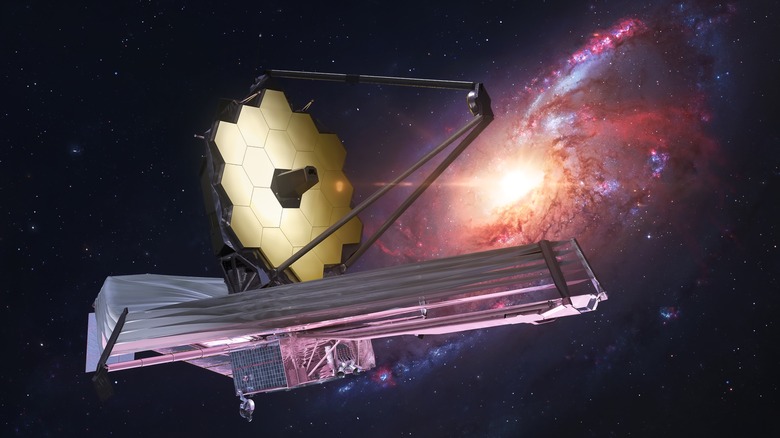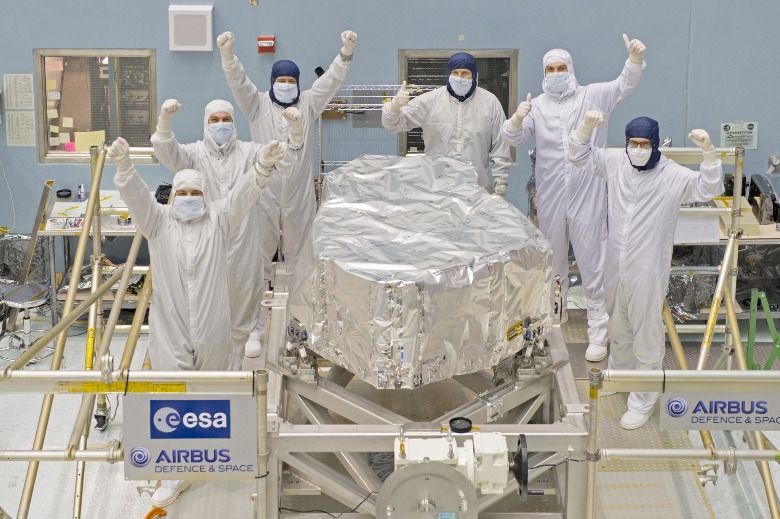What Is NIRSpec? The James Webb Telescope Instrument Explained
With the recent launch of the James Webb Space Telescope, astronomers are excited to start collecting data from the newest and most powerful space telescope in the world. The telescope is still in the process of aligning its mirrors, but once that is completed by this summer, researchers can start using the tools on board the telescope to collect data about all sorts of astronomical phenomena.
There are four science instruments on James Webb, each of which works in the infrared wavelength. That's the portion of the electromagnetic spectrum which is just beyond red visible light, and it's useful to look in this wavelength for scientific research as it allows you to look through some things which are opaque when looked at in the visible light wavelength, like dust. Many objects in the universe are obscured by dust, so infrared instruments are a valuable way to see what might otherwise be hidden.
Webb has a camera, as you'd expect, called NIRCam (Near-Infrared Camera). And it has a combined camera and spectrograph called MIRI (Mid-Infrared Instrument), plus two spectrographs, NIRSpec (Near-Infrared Spectrograph) and NIRISS (Near-Infrared Imager and Slitless Spectrograph). Now, the European Space Agency has shared a video explaining one of these spectrographs, NIRSpec, talking about how it works and what it will be used for.
A spectrograph (which you might also see called a spectrometer) is a tool for splitting up the light coming from an object into a spectrum. From this spectrum, you can get clues about the object like what it's made of. That's because different elements absorb light at different wavelengths, so by looking at what light is being absorbed, you can see what elements the object must be composed of. Spectrographs are often used in space exploration, like some of the instruments on board the Curiosity and Perseverance rovers currently exploring Mars.
Viewing up to 200 objects at once
NIRSpec is a type of spectrograph which works in the near-infrared spectrum, at 0.6 to 5 microns, which is just past the wavelength of red visible light (via NASA). The special thing about NIRSpec is that it can observe many objects at the same time, observing up to 200 objects simultaneously. This is important because many of the objects that Webb will be looking at, such as distant galaxies, are very faint. So the telescope needs to observe them for a long time to get enough light to study them, but there are also thousands of objects that researchers want to observe. By having an instrument which can observe many objects at once, researchers will be able to view many objects for long enough to gather spectrum data.
It is able to observe many different objects because the instrument has 250,000 microshutters, which are tiny shutters about as wide as a human hair, each of which is controlled by a magnetic field to open or close and allow Webb to focus on a particular object. These shutters can block out the light from nearer, brighter objects in order to observe distant, dim objects like far-away galaxies.
NIRSpec won't only be observing distant galaxies though. It will also look at objects like beautiful nebulae, which are clouds of dust and gas, or star fields, which are whole regions of the sky.

